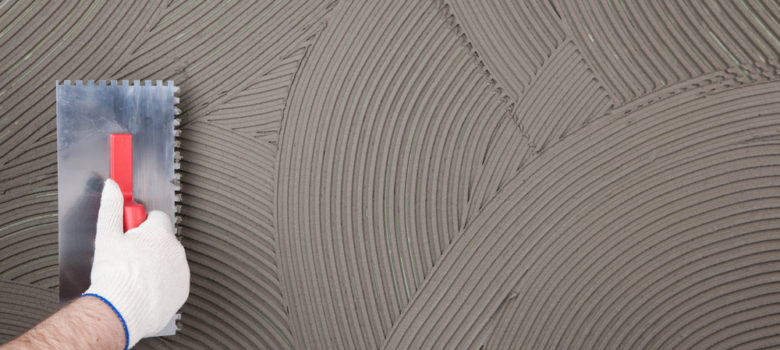
We’re looking at the cost and insulation properties of traditional wet plaster vs the drywall alternative. Which is cheaper? Which is quicker? Which will keep the heat in better? Welcome to the plastering thunderdome.
Wet plaster
The traditional form of plastering, the kind that’s been practised for hundreds of years.
Wet plasters build up layers of strong, hard wearing materials – traditionally lime, gypsum or cement – to create a strong, durable finish. The layers can create a texture, sound resistance and air tightness that aren’t replicated by drywall, however they can also require a lot more labour and specialised skill.
Drywall
The streamlined way to plaster, the stuff you’ve seen on every episode of DIY SOS.
Drywall is essentially big chunks of pre-rendered material that you can stick directly to the wall. It’s like wallpapering instead of painting the design on to the wall.
You still need to cover the drywall with another few coats – one to fill all the gaps that might have been created, a skim coat to cover it, and paint to provide the colour – but it’s a still a whole lot more convenient than wet plaster. The main advantage is that it can be thrown up quickly and easily, with relatively little mess. This can result in much lower labour costs.
Drywall vs wet plaster: Which is cheaper?
For materials alone, wet plaster tends to be cheaper than drywall.
However, unless you’re doing the work yourself, this is not what will cost you the money. The real cost of plastering comes from the labour, and the labour costs vary hugely between drywall and plaster.

The necessary skill of the tradesman and the time it takes them to do the work makes wet plastering a significantly more expensive option.
Drywall vs wet plaster: Which is better insulating?
With regard to the materials themselves, there’s not a huge amount that separates the two in terms of insulation values. There are high quality clay plaster options and special insulated plasterboards on the market, but when you’re looking at standard plasterboard drywall and traditional wet render, there’s not all that much variance. The composition of the wall itself is much more important (ie, cavity or solid wall).
One advantage that should be noted in regard to insulation,however, is the opportunity to install insulation behind drywall. While this can be very effective, it will limit the space inside the room; something that should be fully considered before committing to it.
All of that said, there is one other factor in regards to keeping your house warm that is affected by your choice of plaster. The thermal envelope of the house (ie, how well draught proved your house is) can be seriously altered by choosing either drywall or wet plaster.
Whereas drywall requires cutting at the bottom to make room for a skirting board, and may not necessarily reach the top of the wall perfectly, a wet render can reach everywhere and ensure that the thermal envelope of the room/building is fully intact. This can save you a significant amount of money on your heating bills.
Think we missed something? Do you have a different opinion?
Comment below to get your voice heard…












One Comment